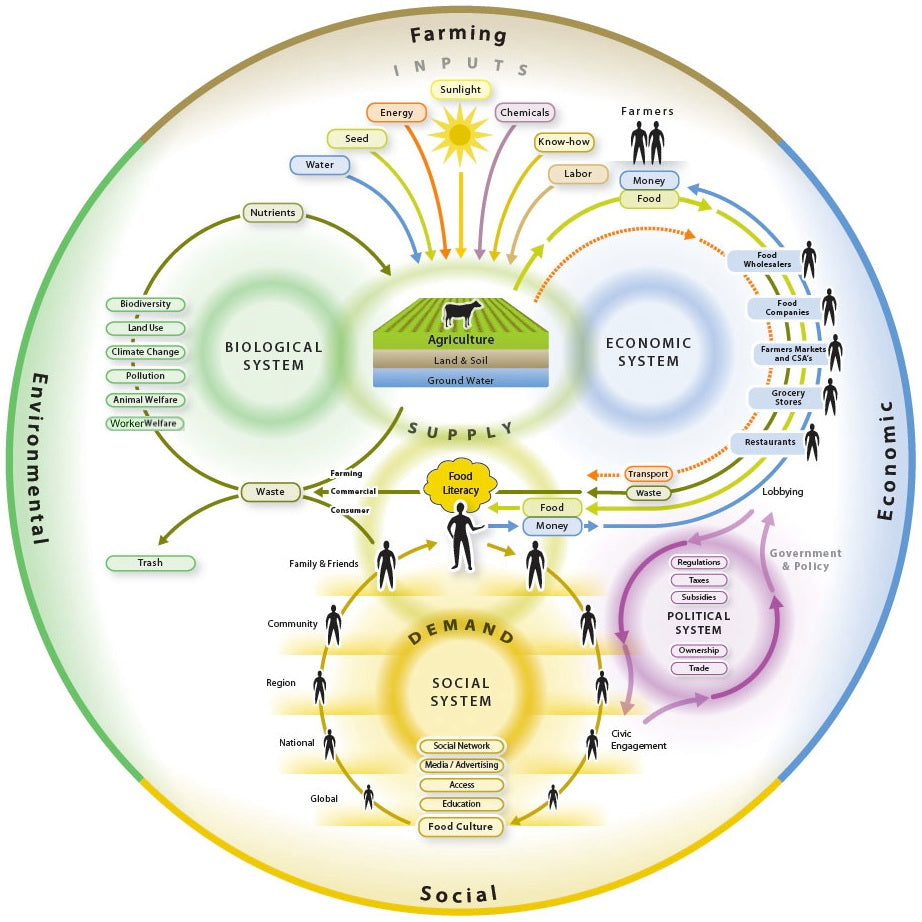What is a Circular Economy?
A circular economy looks closely at our earth's natural ecological cycles. There is no waste in nature, as the death of one organism or natural material gives new life to another.
Applying this concept to human civilization, the circular economy begins with collaboration among varying organizations across sectors and industries to up cycle each other's waste by-products, creating environmental, social and economic value at every stage of the supply chain.

Circular Agriculture
Circular agriculture looks at the broader food system, analyzing growing practices, food processing and consumer behaviour. The shift from a linear to circular system within agriculture looks at how value can be created and re-integrated from the waste that is generated at each stage of this complex and interconnected system.
-
Growing Practices
Our food system begins in our soil, and the health of the soil is dependent on our farming practices. Regenerative agriculture is a natural farming practice which focuses on revitalizing soil health, biodiversity, water management and carbon sequestration while growing nutritious food for a local community.
-
Food Processing
While processing and packaging food, waste by-products are inevitably created. In a circular system, they are designed to be reintroduced into the production process. All of these by-products contain valuable nutrients or materials that can be used again in agriculture or another sector.
-
Consumer Behaviour
As consumers, we have the power to vote for the food system we believe in with our purchasing decisions three meals a day.
